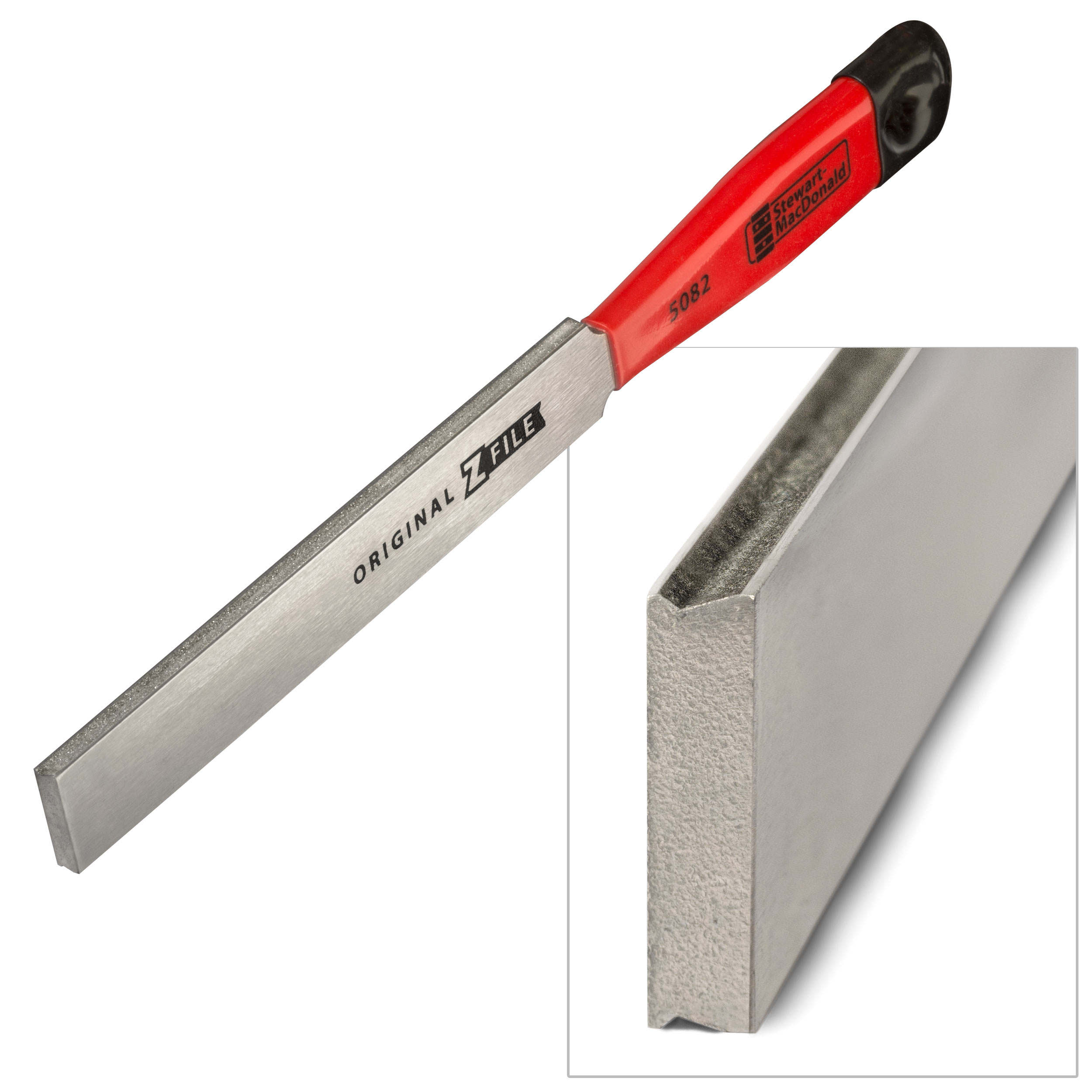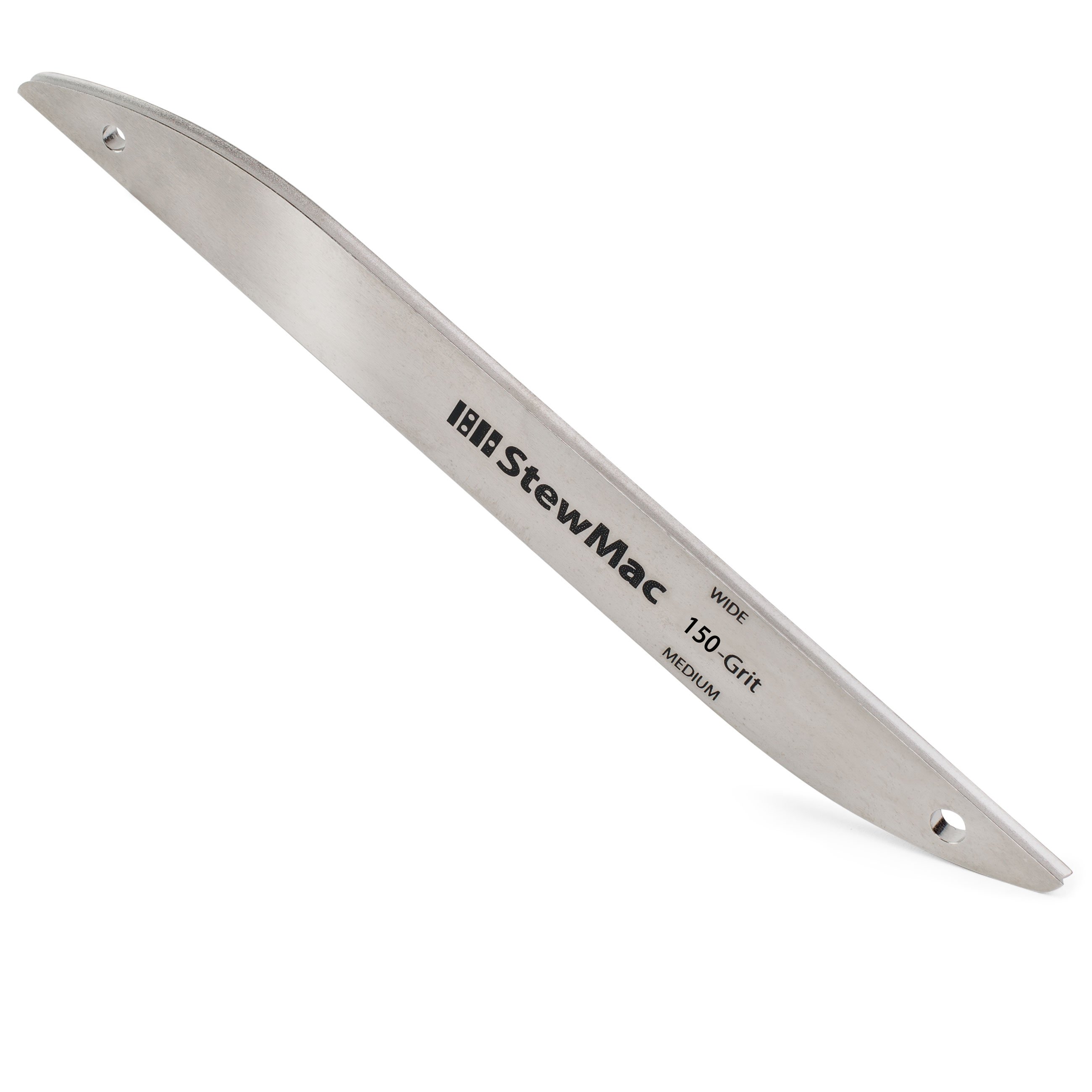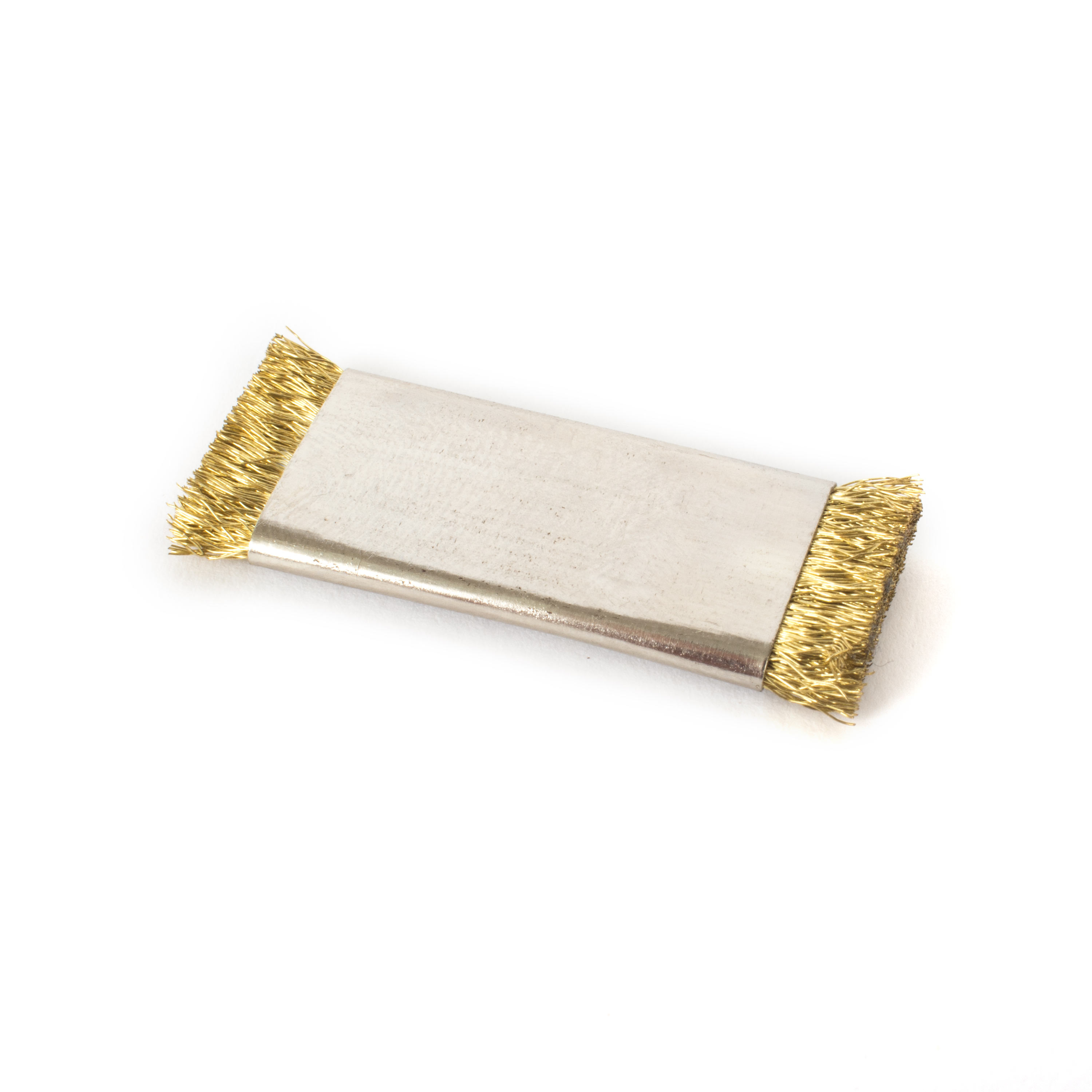How to choose the perfect fret crowning file
Issue 327 March 21, 2019
With so many fret crowning files on the market how do you choose? Which one is the "best"? It depends on a lot of factors, how skilled are you at doing fret work, what's your budget, is this a hobby or are you doing repair work for money? In this Trade Secret Erick demonstrates each of the major types of files and shares tips that'll help you decide which file is right for you.
- Three-corner files: traditional and affordable
- Concave files: widely used for years and years
- Diamond files: no chatter from file teeth
- Z-Files: a new angle that's perfect for beginners and pros
Video Transcription
[on-screen text reads: StewMac - tools + ideas for guitarmaking]
Which Fret Crowning File Do You Need?
Erick Coleman: When you're doing a fret level and dress, the next step after actually leveling the frets is called crowning.
Crowning is the resculpting of the flattened fret to the nice rounded shape that it originally had when it left the factory.
And this is important for a few different reasons. One is, it gives you better playability when the contact area on the fret is small, more narrow.
And it also gives you better intonation. If you were to string up a neck with freshly leveled frets, the intonation points would all actually be forward and the guitar wouldn't play in tune very well. So crowning is a really important procedure.
We carry a bunch of different crowning files. We have five different types, almost 20 different files, and that's a lot to consider, especially if you're trying to figure out which one of these is going to best suit your needs.
So I'm going to take you through all the different types of files that we have. We're going to start with the traditional 3-Corner file, and we're going to end with the latest innovation in crowning files, our Z-File.
To learn more about fret crowning and a bunch of other cool Luthier stuff, subscribe to our YouTube page.
Okay, let's get started.
Traditional 3-corner Files
The goal here, as I mentioned, is to reshape that fret to a nice rounded shape. First thing I'll do, is I'll blue the top of this leveled fret with this marker. This helps you see the surface and as you're removing metal, you can see your progress.
You want that line, we call it "land" or "landing strip," to be like this fret here, as narrow as possible, without actually scuffing off the top of it.
So getting started with the 3-Corner files [on-screen text reads: 3-Corner Fret Dressing Files - stewmac.com], probably the oldest type of fret crowning file. My personal favorite, the 3-Corner medium file. I've done thousands of fresh jobs with this. They're all a single cut with real fine teeth on them. So they do a real smooth stroke across the fret. It's almost like you're just peeling it off, and then it has safe ground edges, so they don't mark up your fingerboard.
What I like about them is their accuracy. You can really dial in a fret shape. One of the downsides though, is it takes a little bit of time to learn how to use it correctly. And even when you refine your technique, it still takes a little longer than some of these other files. But to me, that's a good trade off for the accuracy.
That's your nice thin line that you're looking for.
It's also an inexpensive file and our best selling file. The 3-Corner file is awesome.
Concave Toothed File
The next type of file that we're going to cover, I call a traditional crowning file. They have a concave surface that fits over the fret top, with the teeth, cut into it. And with each stroke, it evenly brings in those edges until you have a nicely rerounded fret.
These are very popular. You'll see them in factories and repair shops all over the world. They're inexpensive. They're durable. They'll last a really long time.
The downside is they can chatter. If you don't get a nice smooth stroke over the top of that fret, it kind of skips a little bit and will leave these little dents in the fret that you'll either have to continue crowning until you smooth them out, or do some extra addressing to make those go away.
A must have tool when using a tooth file is our File Cleaning Brush, pretty much every couple frets or every fret, maybe, you need to clean those teeth really good, so there's no shaving stuck down in those teeth because if they are, you can drag that back over the fret and leave a scratch that you might not be able to sand out.
We have a couple different versions of this file. These are our StewMac Double-edge Fret Files. One is for narrow and medium frets. The other one is for wide and jumbo frets.
We also have the Gurian Three-In-One Fret File. It has interchangeable burrs. A narrow, medium, and wide. Another cool feature is the offset handle. What's great about this is it lifts the handle up over your work, whereas a typical traditional type file, especially if you're on a steeper radius fingerboard, you risk running the handle into the body while you're trying to get the base side of the front rounded. Clever design and it's also very functional.
Quarter-round Files
The next one we have is another file by Michael Gurian, called the Quarter-Round. And it combines the accuracy of the 3-Corner file, with the simplicity of a traditional concave file, to make something that's totally different than anything else out there.
So you'll look closely at it and you'll see these quarter-round tooth sections [on-screen text reads: Gurian Quarter-Round Fret File - stewmac.com], as well as safe edges all the way around.
Like the 3-Corner file, you're only removing material off of one side of the fret at a time. And you tip that file, ride the fretboard until you've reshaped that fret to a really nice round shape.
And it gets you there pretty quick. It's easier to get to know than a 3-Corner file. It might take you a little longer to develop your skill than a traditional crowning file, but it is another awesome way to get a good crown on your frets.
Concave Diamond Files
So now we're going to move on to diamond files.
A traditional tooth file, as I mentioned, can chatter a little bit. They can also leave the fret looking a little bit rough, but with the diamond files, they kind of eliminated all that.
The diamond files have diamond abrasive embedded in the tool. That's like sandpaper almost. We have 150 grit and 300 grit. With the smooth abrasive, you're already well on your way to a final dress, when you're done with the crowning process. And you don't get the shavings build-up that you do with a tooth file.
Those work on both the push and pull strokes, where a traditional tooth file only works on the push stroke. We have a bunch of different kinds. The 150 grit is used when you have to really hog off a lot of material, and then you bring in the 300 to smooth that out and make it look a little prettier. Or if your fret wear is not that bad, you could get away with just using the 300.
The offset, have a nice offset shape, which like the Gurian offset [on-screen text reads: Offset Diamond Fret File - stewmac.com], clears your body, clears the horns on the guitar as you're working.
We also have our double-edge, which is basically a diamond version of our traditional tooth crowning file [on-screen text reads: Double-Edge Diamond Fret Files - stewmac.com]. If you like that same type of file, you can get a diamond version of it and still have that same feel.
The next type we have is what we call a Dual-grit [on-screen text reads: Dual-Grit Diamond Fret File - stewmac.com]. It's like a diamond version of the Gurian file. It too, has an offset handle, and then it has two removable grits. So one side is 150 and then the other side, you flip it around and snap it right in, is 300.
They feel really good in the hand. They're lightweight. They're easy to control. And all around, it's a good file. I like these quite a bit.
Z-Files
Last up, we have the Z-File. We're pretty proud of these. We like to say that this is really the most significant innovation in a fret crowning file, since the traditional crowning file.
Sometimes, if you're using a traditional concave file, and you're really going at it, you might go too far and then just scuff off the top of that leveled fret and blow your leveling job.
Where the Z-File is awesome, is it has that V-shape. It's impossible to scuff off the top of your fret there. We call it a foolproof tool.
We have three different versions of these guys [on-screen text reads: StewMac Z-Files - stewmac.com]. They are all 300 grit. We have the centered, which is a perfectly symmetrical V-shape on both sides. And the safe edge. The safe edge works a lot like a 3-Corner file or the Gurian Quarter-round. You use it to work on one side of the fret at a time. So it's just a different type of single edge diamond file.
And then the original Z-File, the idea behind this one was to give you two different offset cutting angles, which are opposite on the opposing side. So you can make your file strokes. It cuts off the two different facets. You flip it over and it repeats the process on the opposite side. So you get a very nice rounded fret in a fraction of the time of most other files. It's really fast.
A common question we get is what is the best crowning file for a beginner and for somebody with a lot of experience?
Any day, I would say, the centered Z-File. It's foolproof enough to where somebody who is just getting started can get excellent results. And it is also innovative enough, that if you're experienced, it makes the job go much quicker and you get much more accuracy than you can with any other file. I'm behind them 100%.
Don't let the cost scare you. It is worth every penny and the frustration that it relieves.
I really wish I had this video when I was getting started, because I didn't know which fret crowning files I needed.
Hopefully, this video will help you understand the files, what they do, and choose the one that will suit you the best.









